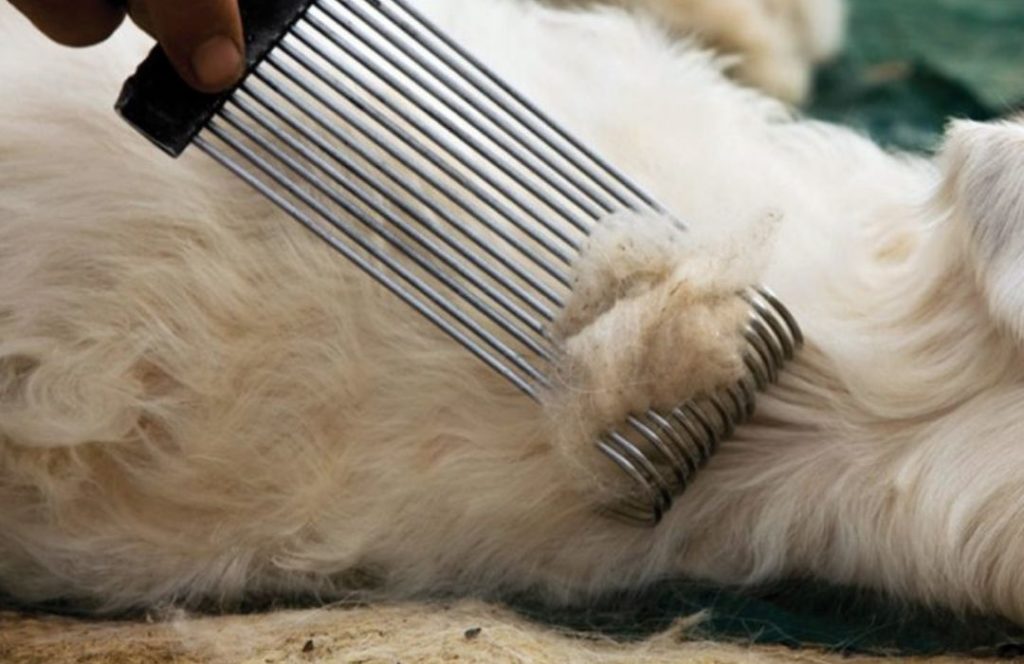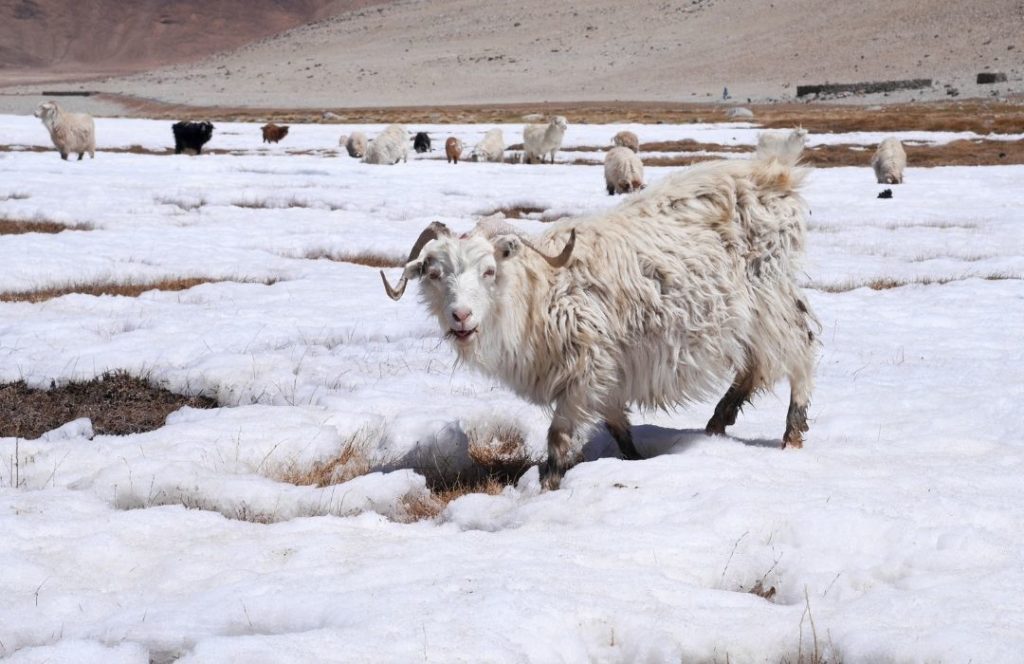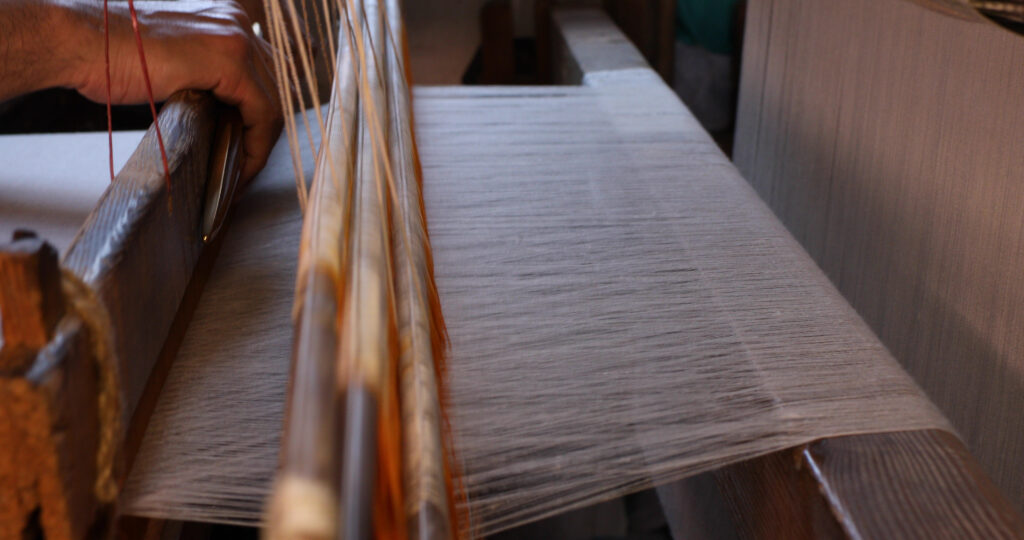Cashmere - the downy luxurious hair obtained from the Cashmere goats have for centuries been used to produce yarn. From this yarn, textiles, shawls, wraps, scarves, furnishing and other accessories have been crafted since the 15th century. The famous Kashmiri shawls (called Pashmina shawls) are also a product of the long processing of Cashmere wool, which is done in Kashmir itself.
Where is Cashmere found?
Cashmere is found growing on rare species of goats called the Capra Hircus. These are found around the Himalayas, at different points, and hence a number of countries close to these points are producers of Cashmere. China and Mongolia top this list, while other countries produce the same in lesser amounts.
Gathering wool from the Goat
Cashmere is collected during spring and summer. This is the moulting season for the goat which grows it. It starts around March, and till May, maximum Cashmere is collected. The coat of hair grows back as soon as the first signs of winter occur.

The hair is collected from the body of the Cashmere goat in March. This is when due to hormonal changes, the goat itself loses a major part of the hair. The rest of it is gently combed off using specialized tools and combs. This is packed in small packs, post a basic cleaning process. After cleaning, the wool is processed into yarn, and the yarn is woven to make Cashmere scarves, shawls, or plain fabric to be processed later.
Production of Cashmere
China is the largest producer of Cashmere followed by Mongolia. These two nations together produce more than 90% of the total cashmere produced in the world. Other countries like Afghanistan, Iran, Turkey, Kyrgyzstan, Pakistan, and India also produce cashmere, but in lesser amounts. The best quality is produced in the Ladakh area of Jammu and Kashmir in India. This Cashmere is the finest and the warmest amongst all. It is used in the making of the world-famous Kashmiri shawls.
Cashmere and Ladakh
Over an altitude of over 14000 feet, North of India lies a region, cut away from the hustle and bustle of the main city. The region is Changthang and lies in the Ladakh area of Jammu and Kashmir. Changthang is cruelly cold and freezes at a temperature of minus 40 degrees in winter. While people themselves never choose to travel to this corner of the world, except for in peak summer season, there are communities which have lived here since the start of time. Buddhist monks of Ladakh, have been born and raised in these harsh conditions, and it is this community that continues to live here with their prized herds, Cashmere goats being one of them.

Cashmere goats of Ladakh are called Changthangi goats, named after the place they are specifically found in. These goats grow fine wool in the winter season, but in Spring get rid of most of it. The rest of the wool, still on their bodies is gently combed off by professionals, and packed in small packets. This is sent to Kashmir for processing, as Ladakh itself lacks the proper infrastructure, and labour needed for the processing of the fine wool.
Also read: Sustainable Gifts | Ethically Sourced Cashmere Wraps
Arrival In Kashmir
As soon as Cashmere from Ladakh reaches Kashmir, artisans await its arrival with open arms. It is received by middlemen first, who send it to womenfolk of the valley. The women sit in groups and start cleaning the Cashmere. The threads are sorted one by one, making the process one of the most laborious processes. Post this cleaning, where any external substances are removed from the wool, clean Cashmere is soaked in a mixture of rice powder and water paste. It is soaked for days, making the threads stronger and shinier. After 3 or 4 days, the fibre is removed from the rice paste and cleaned again. This super clean, stronger and finer version of Cashmere is sent for hand spinning.
Hand spinning is again done by the womenfolk of the valley. A number of women own a wooden spinning wheel, which is locally called “yinder”. The yinder transforms Cashmere wool lumps to fine yarn, 12 to 16 microns in diameter. It is the rhythms of the movement of the hands and the wheel that is responsible for producing Cashmere yarn. Once the yarn is ready, it sent for weaving

Weaving is carried out by the men. One or two people sit at a time and weave the fine yarn into fabric. The fabric can be shawls, scarves, plain fabric for making accessories, furnishing items and more. The weaving process takes 3 to 4 days to complete. It is again a labour intensive process that takes a lot of hard work by the workers. Sitting an entire day for 8 to 10 hours every single day is a challenge in itself, but the passion of the artisans knows no bounds.
Is Cashmere made in Kashmir?
Cashmere is processed in Kashmir. It is procured from the Ladakh region, but since Ladakh itself has no artisans or the proper infrastructure to process Cashmere, it is sent to Kashmir. Processing units in Kashmir were set up in the 15th century, by the then king Zain ul abideen, who was impressed by the fine quality and warmth of the wool. Since then, Cashmere has been processed in Kashmir, and it has been centuries since the artisans of the valley mastered this art. Procured from Ladakh, each process in the making of the finished products is carried out in Kashmir. Spinning, weaving, embroidery, styling, designing, each step is carried out by a different set of artisans from Kashmir.

The best use of Ladakhi Cashmere till date is the making of the Kashmiri Pashmina shawl. These shawls are exceptionally warm, lightweight, fine, beautiful and timeless. It was the Kashmiri Pashmina shawls, which became the obsession of ancient European royalty in the 18th century. Europeans, especially the queens, noblewomen and affluent among them were the ones to invest in hundreds of shawls at once.
If invested in a pure Cashmere scarf, the same last for a lifetime. No doubt in the ancient time's women gave their own shawls to their newlywed daughters, the masterpiece looked grand and immensely elegant.
Also read: What is a Sozni shawl?